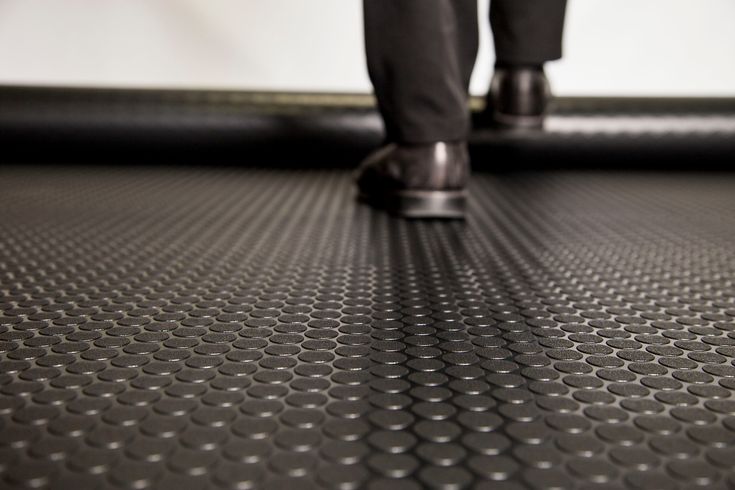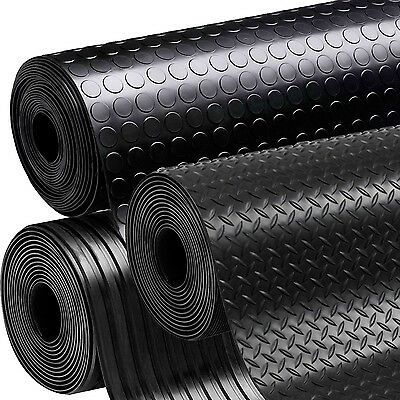Table of Contents
Toggle
What is Rubber Matting for Floors?
Rubber matting for floors is a versatile and practical flooring solution that offers many benefits for various applications. Whether it is for industrial settings, commercial spaces, or even residential areas, rubber matting provides durability, safety, and comfort. In this article, we will explore what rubber matting for floors is, the types of floors where it is suitable, diverse types of rubber matting, the benefits it offers, and how to cut thick rubber mats.
Rubber matting for floors refers to the use of rubberized materials as a flooring choice. It is a popular choice due to its exceptional durability, slip resistance, and comfort. Rubber matting is commonly used in high-traffic areas where safety and protection are crucial. It supplies a reliable surface that can withstand heavy use, impacts, and spills.
Rubber Matting for Floors is Suitable on the following types of Floors:
- Industrial Floors: Rubber matting is commonly used in industrial settings such as factories, warehouses, and manufacturing facilities. It provides traction, absorbs shock, and helps prevent accidents in areas with heavy machinery, chemicals, and oils.
- Gymnasium Floors: Rubber matting is ideal for gymnasiums and fitness centres due to its shock-absorbing properties. It provides a cushioned surface that reduces the risk of injuries and protects equipment from damage.
- Commercial Spaces: Rubber matting is often used in commercial spaces like retail stores, restaurants, and offices. It offers a professional appearance, reduces noise levels, and provides a comfortable surface for employees and customers.
- Residential Areas: Rubber matting can be used in residential areas such as garages, basements, and playrooms. It offers durability, insulation, and slip resistance, making it suitable for high-traffic areas or spaces where moisture may be present.

Different Types of Rubber Matting:
There are various types of rubber matting available, each designed for specific purposes:
Interlocking Rubber Tiles: These tiles are easy to install and provide a seamless, non-slip surface. They are commonly used in gyms, playgrounds, and industrial areas.
Rubber Rolls: Rubber rolls are versatile and can be easily cut to fit any space. They are ideal for large areas like warehouses and garages.
Anti-Fatigue Mats: These mats provide cushioning and support to reduce fatigue and discomfort in standing work environments such as factories and kitchens.
Outdoor Rubber Matting: Specially designed for outdoor use, these mats offer weather resistance and durability. They are commonly used in playgrounds, walkways, and entrances.

10 Benefits of Rubber Matting:
- Durability: Rubber matting is durable and can withstand heavy use, impacts, and spills.
- Slip Resistance: Rubber matting provides excellent traction, reducing the risk of slips and falls.
- Comfort: The cushioned surface of rubber matting offers comfort and reduces fatigue, making it ideal for standing work environments.
- Sound Absorption: Rubber matting helps reduce noise levels, making it suitable for commercial spaces and residential areas.
- Insulation: Rubber matting provides insulation against cold and heat, making it comfortable in any weather.
- Easy Maintenance: Rubber matting is easy to clean and maintain, requiring minimal effort.
- Chemical Resistance: Rubber matting is resistant to chemicals and oils, making it suitable for industrial settings.
- Versatility: Rubber matting is available in assorted styles, colours, and thicknesses to suit different applications.
- Eco-Friendly: Many rubber matting options are made from recycled materials, making them an environmentally friendly choice.
- Cost-Effective: Rubber matting offers a cost-effective flooring solution due to its durability and long lifespan.
How to Cut Thick Rubber Mats:
- Cutting thick rubber mats can be challenging, but with the right tools and techniques, it can be done effectively. Here is a step-by-step guide:
- Measure and mark the desired dimensions on the rubber mat using a measuring tape and a marker.
- Place the rubber mat on a flat surface, ensuring it is secure and will not move during the cutting process.
- Use a sharp utility knife or a rubber cutting tool to score the rubber along the marked lines. Apply firm, steady pressure to penetrate the thickness of the mat.
- Repeat the scoring process multiple times until you have a deep groove along the marked lines.
- Bend the mat along the scored lines to break it apart. Use a rubber mallet or a hammer to help separate the pieces if needed.
- Trim any rough edges or uneven cuts with the utility knife or rubber cutting tool.
Rubber matting for floors offers numerous benefits, making it a popular choice for various applications. Its durability, slip resistance, and comfort make it suitable for industrial, commercial, and residential spaces.
